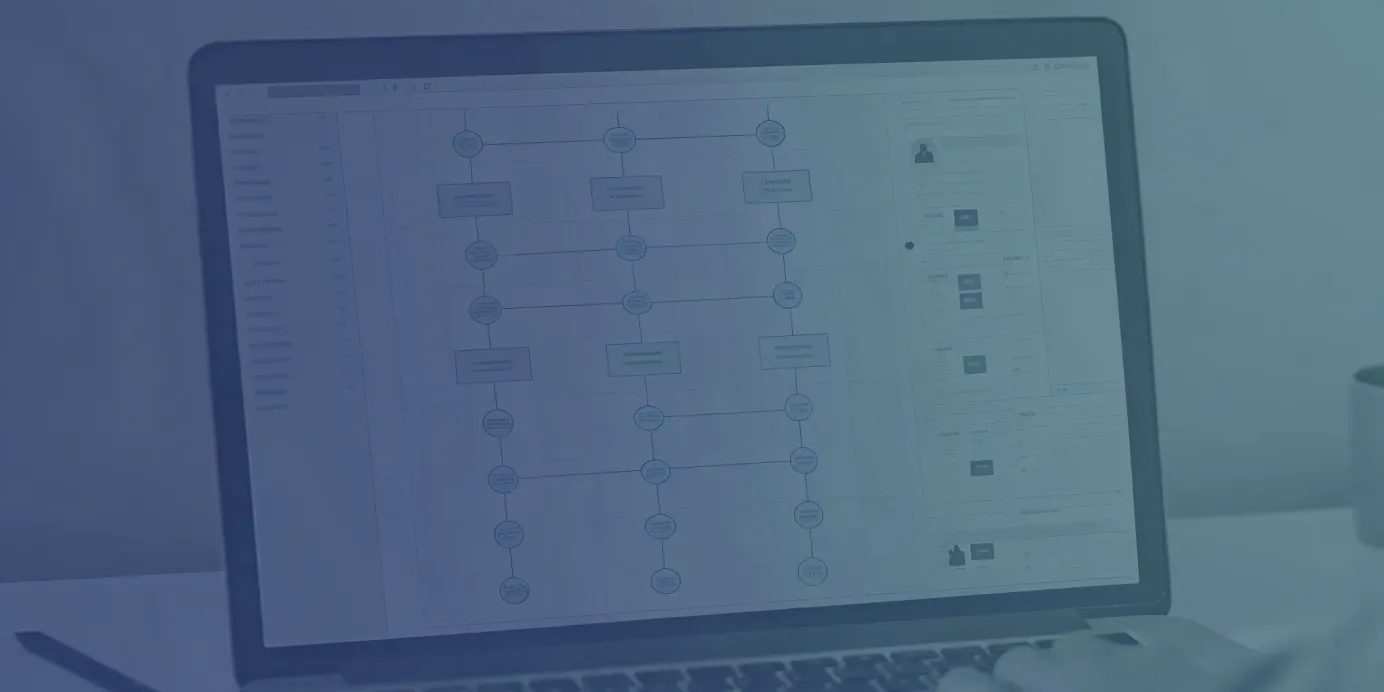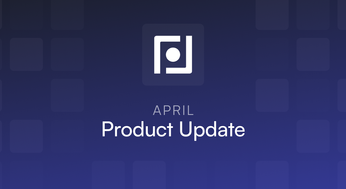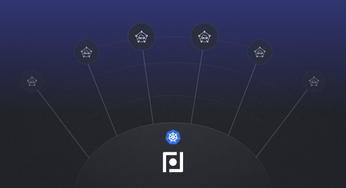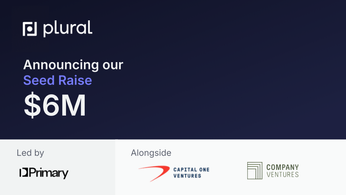
Kubernetes Pods: A Comprehensive Guide
Master the Kubernetes pod lifecycle, networking, and storage options with this comprehensive guide. Learn best practices for managing and troubleshooting pods.
Table of Contents
Kubernetes pods are fundamental to container orchestration. This guide provides a comprehensive overview, exploring pod architecture, lifecycle, networking, and storage. Whether you're a beginner or an expert, you'll gain practical knowledge for managing and troubleshooting Kubernetes pods effectively. We'll cover everything from creation to termination, including various phases, conditions, networking, storage, and advanced configuration.
This guide provides practical insights and best practices for working with Kubernetes pods, whether you're new to Kubernetes or seeking to deepen your expertise.
Unified Cloud Orchestration for Kubernetes
Manage Kubernetes at scale through a single, enterprise-ready platform.
Key Takeaways
- Pods are the atomic units of Kubernetes deployments: Pod packages one or more containers, sharing resources like network and storage. To manage pod lifecycles effectively, use higher-level workload controllers (Deployments, StatefulSets, Jobs).
- Resource management and security are essential: Define resource requests and limits to ensure predictable performance. Leverage security contexts and network policies to control Pod privileges and network access.
- Troubleshooting involves understanding the Pod lifecycle: Use kubectl commands, logs, and probes to diagnose issues. Monitor Pod phases, conditions, and events to pinpoint the root cause of problems.
Why are Kubernetes Pods Important?
Kubernetes Pods are the fundamental building blocks of applications deployed within a Kubernetes environment. They act as the smallest deployable units, encapsulating one or more containers and enabling them to share resources like networking and storage. This shared resource model is crucial for efficient communication and data exchange between containers within a Pod. As the Kubernetes documentation explains, a Pod is a group of containers with shared storage and network resources, and specifications for how to run the containers.
Pods provide a higher level of abstraction than individual containers, simplifying the deployment and scaling of applications. Instead of managing containers directly, you work with Pods, which represent a cohesive unit of application logic. Kubernetes handles the complexities of running and managing these Pods, often through controllers like Deployments, which maintain the desired state of your Pods, allowing you to focus on the application itself.
Resource management and security are paramount in any production environment. Pods play a key role in both. By defining resource requests and limits at the Pod level, you ensure predictable performance under varying loads, preventing resource starvation. Security contexts and NetworkPolicies offer granular control over Pod privileges and network access, respectively, strengthening your application's security. This isolation and control are essential for multi-tenant clusters and applications with varying security needs. For more details on containers and Pods, see this Pure Storage blog post.
Finally, understanding the Pod lifecycle is critical for effective troubleshooting. Pods transition through various phases (Pending, Running, Succeeded, Failed, Unknown) and conditions (Ready, Initialized, ContainersReady, PodScheduled), offering valuable insights into their operational state. Monitoring these phases, conditions, and events helps pinpoint the root cause of issues. Kubernetes documentation provides resources for debugging running pods. Tools like kubectl describe pod and kubectl logs are invaluable when investigating Pod behavior and diagnosing problems. For a platform that simplifies Kubernetes management at scale, consider Plural.
What is a Kubernetes Pod?
Definition and Core Concepts
A Pod is the smallest deployable unit in Kubernetes. It is a wrapper for one or more containers, sharing resources like storage and network. These containers always run together on the same node in your cluster. A Pod ensures your application components stay tightly coupled and operate in a consistent environment. Pods can also include specialized containers like init containers, which run setup tasks before the main application containers start.
Ephemeral Nature and Automatic Replacement
Kubernetes Pods are designed to be ephemeral—they're temporary and exist for a specific period. A Pod runs until its task is completed, it's deleted by a user or controller, or encounters an error. This inherent transience is a core feature of Kubernetes, enabling resilience and scalability. If a Pod fails due to an error or node failure, Kubernetes automatically replaces it, ensuring your application remains available. This automatic replacement is governed by controllers, which we'll discuss later.
Pod Templates as Blueprints
Pod templates serve as blueprints for creating new Pods. These templates define the desired state of a Pod, including the containers, resource requests, security settings, and other configurations. When you need to create multiple Pods with similar specifications, you use a Pod template. Changes to a Pod template only affect newly created Pods; existing Pods remain unaffected. This allows you to update your application by deploying a new template, and Kubernetes will gradually replace the old Pods with new ones based on the updated template. This rolling update process minimizes downtime and ensures a smooth transition.
Security Controls and Operating System Options
Kubernetes provides robust security controls for your Pods, allowing you to define their privileges and restrict their actions. Pod Security Admission lets you set policies to control what a Pod can do. You can limit a Pod's access to resources, prevent it from running as root, and enforce other security best practices. Kubernetes also supports different operating systems for your Pods. You can specify whether a Pod should run on Linux or Windows, providing flexibility for running diverse workloads.
User Interaction with Pods via Controllers
While you can create individual Pods directly, it's generally not recommended for managing complex applications. Instead, Kubernetes offers higher-level abstractions called controllers. Controllers manage the lifecycle of Pods, ensuring they adhere to the desired state. For example, a Deployment controller maintains a specified number of replica Pods, automatically scaling your application up or down based on demand or resource availability. Other controllers like StatefulSets and Jobs handle stateful applications and batch processing tasks. By using controllers, you automate Pod management and ensure your application runs reliably and scales efficiently. For instance, if a node fails, the controller automatically reschedules the affected Pods on a healthy node, maintaining application availability. For complex deployments and managing Kubernetes at scale, platforms like Plural offer robust management capabilities.
The Pod's Role in Kubernetes
While Pods are fundamental to Kubernetes, you won't typically create them directly. Instead, you'll use higher-level workload resources like Deployments, which manage the lifecycle of your Pods, handling scaling, rollouts, and restarts automatically. This abstraction simplifies management and ensures your applications remain resilient.
Understanding Pod Components and Features
Containers: The Core of a Pod
A Pod is a group of one or more containers—your application's actual running processes. These containers within a Pod always run together on the same node and share resources like storage and network. While a Pod can contain multiple containers, the most common use case is a single container within a pod.
Shared Networking
One of the defining features of a Pod is its shared network namespace. This means all containers within a Pod share the same IP address and port space. They can communicate with each other using localhost, simplifying inter-container communication. This shared networking model is crucial for applications that require tight coupling between different components. However, the communication between Pods requires IP networking, typically handled by a Kubernetes Service.
IP Address Allocation per Pod
Each Pod in Kubernetes receives a unique IP address, much like a physical machine or virtual machine in a traditional network. This IP address isn't assigned to individual containers within the Pod, but to the Pod as a whole. This design stems from the Pod's role as the smallest deployable unit—it's the Pod, not the containers, that Kubernetes schedules onto a node and manages. Think of the Pod as a small, isolated network environment for your containers. This shared network namespace lets containers within the Pod communicate using localhost, simplifying communication without complex networking configurations.
This unique Pod IP address is crucial for several aspects of Kubernetes networking:
- Inter-container communication: Containers within a Pod communicate using
localhostbecause they share the same network namespace and IP address. This simplifies application development, especially for microservices architectures requiring close component interaction. - External communication: While containers within a Pod share an IP, communication between Pods, or from external sources to a Pod, requires IP networking. A Kubernetes Service typically handles this, acting as a stable entry point to a group of Pods. It abstracts away individual Pod IPs and provides load balancing and service discovery.
- Network policy enforcement: Kubernetes NetworkPolicies operate at the Pod level. Using Pod IP addresses, network policies control traffic flow between Pods, enabling fine-grained network security. You can restrict access to specific Pods based on their IP addresses or labels, ensuring only authorized traffic.
Understanding Pod IP address allocation and usage is fundamental to working with Kubernetes networking. It allows you to design and manage applications effectively, ensuring efficient communication and robust security. For a deeper dive into Kubernetes and how to manage deployments at scale, explore Plural, a unified platform for enterprise-grade Kubernetes management.
Persistent Storage with Volumes
Pods can also define and use persistent storage through Volumes. A Volume is a directory accessible to all containers within the Pod, providing a mechanism for data persistence even if the containers restart or the Pod is rescheduled. This is essential for stateful applications like databases, which need to retain data across restarts.
Deep Dive into Pod Architecture
The Operating System's Perspective: Namespaces and Cgroups
While Kubernetes manages Pods as the smallest deployable units, the underlying operating system (OS) doesn't have a direct concept of a Pod. The OS kernel interacts with namespaces and cgroups, providing resource control and isolation for containers. Namespaces isolate aspects of the OS environment (network, filesystem, process IDs), while cgroups manage resource allocation (CPU, memory). Kubernetes uses these OS-level mechanisms to create the Pod abstraction.
Resource Sharing and Isolation with Cgroups
A Pod is a group of one or more containers sharing resources like network and IP address, running on the same node. Cgroups manage resource sharing and isolation within a Pod. Defining resource requests and limits for each Pod ensures predictable performance and prevents resource starvation, enforced by cgroups at the OS level.
Kubernetes, Kubelet, and the Container Runtime
Kubernetes orchestrates Pod creation, scheduling, and monitoring, but container management is handled by container runtimes like containerd or runc. The kubelet, an agent on each node, communicates with the Kubernetes control plane and the container runtime to manage containers within Pods.
The Virtual Machine Analogy
Think of a Pod as a lightweight virtual machine (VM). A VM has its own OS, while a Pod shares the host OS kernel but has isolated resources. This shared kernel makes Pods lighter and faster than VMs. This efficiency, combined with resource isolation from namespaces and cgroups, makes Pods effective for running containerized applications.
Pods as "Cgroup'd Operating Environments"
Pods ensure application components operate in a consistent, tightly coupled environment. Shared resources, like the network namespace, allow seamless inter-container communication within a Pod. This consistent environment, managed by cgroups and namespaces, simplifies application development and deployment. Tools like Plural can further streamline the management of Kubernetes deployments and related infrastructure.
The Pod Lifecycle
This section explains the lifecycle of a Kubernetes Pod, from creation to termination, including the various phases and conditions it transitions through.
Pod Creation and Termination
Pods themselves are ephemeral. They're created, run their workload, and then terminate. You rarely create Pods directly. Instead, you'll typically use higher-level workload resources like Deployments, Jobs, or StatefulSets. The controlling workload resource ensures the desired number of Pods are always running, even if individual Pods fail. This dynamic nature allows Kubernetes to manage resources and maintain application availability efficiently.
Pod Phases and Conditions
A Pod transitions through several phases during its lifecycle, providing a high-level summary of its state:
- Pending: The Kubernetes cluster has accepted the Pod, but one or more containers haven't been created. This phase often signals issues pulling container images or assigning resources.
- Running: All containers in the Pod have started. However, this doesn't guarantee they're fully functional.
- Succeeded: All containers in the Pod have terminated successfully, and the Pod will not restart. This is common for Jobs.
- Failed: All containers in the Pod have terminated, and at least one exited with a failure.
- Unknown: The kubelet can't determine the Pod's status, usually due to communication problems with the node.
Beyond these phases, Kubernetes uses Pod conditions for more granular status information. For instance, a Pod in the Running phase might have a condition Ready:False, indicating it can't yet serve traffic. The kubelet uses probes (liveness, readiness, and startup) to check the health of containers within a Pod, helping determine the appropriate Pod phase and conditions.
Pending Status and Common Reasons for Delays
A Pod enters the Pending phase when the Kubernetes cluster has accepted it, but one or more of its containers haven't been created. This phase often indicates underlying issues preventing the Pod from transitioning to the Running phase. Let's explore some common culprits:
- Image Pull Issues: The cluster might struggle to pull the necessary container images. This typically stems from incorrect image names, insufficient access permissions to a private registry, or network hiccups hindering the download. Always double-check your image names and tags in your Pod specifications (you can use Plural to manage these configurations). For private registries, ensure your cluster has the correct credentials and secrets configured. A quick test with a
docker pullcommand from a node in your cluster can help isolate connectivity or authentication problems. If you're using Plural, our platform simplifies image management and provides detailed error logs to help diagnose these issues quickly. - Resource Constraints: If your cluster lacks the resources (CPU, memory, etc.) to meet the Pod's requests, it will remain Pending. Resource management is key. Accurately defining resource requests and limits ensures predictable performance and prevents resource starvation. Over-provisioning or inefficient resource allocation can lead to Pods stuck in Pending, waiting for available capacity. Plural’s dashboards can provide insights into your cluster’s resource utilization, helping you identify and address bottlenecks.
- Node Affinity and Taints: Taints and tolerations control which Pods can be scheduled on specific nodes. If a Pod has node affinity rules that can't be satisfied, or if nodes have taints that repel the Pod, it will stay Pending. Carefully review your Pod's affinity settings and node taints to ensure compatibility. Using
kubectl describe nodecan reveal relevant taints and help diagnose scheduling conflicts. Plural simplifies management of taints and tolerations, allowing you to define these constraints through our intuitive interface. - Volume Binding Issues: If your Pod relies on PersistentVolumes, and those volumes are unavailable or can't be bound to the Pod, it won't start. This can happen due to storage provisioning delays, misconfigurations in PersistentVolumeClaims, or insufficient storage capacity. Check the status of your PersistentVolumes and PersistentVolumeClaims using
kubectl get pv,pvcto identify any binding errors. Plural streamlines storage provisioning and management, making it easier to configure and troubleshoot PersistentVolumes for your applications.
Troubleshooting Pending Pods involves examining the Pod's status and conditions. kubectl describe pod <pod-name> provides detailed information, including events and logs, which can pinpoint the root cause. Tools like kubectl get events can also offer valuable insights into cluster-wide issues affecting Pod scheduling. With Plural, you can access all of this information through our centralized dashboard, simplifying the debugging process and reducing the time it takes to resolve issues.
How Pods Interact with Other Resources
Understanding how Pods interact with other Kubernetes resources (workload controllers and service discovery) is crucial for managing and scaling your applications.
Pods and Workload Controllers
The workload controllers manage the lifecycle of your Pods, ensuring the desired number of replicas run and automatically restarting failed Pods. Think of controllers as supervisors for your Pods. Standard workload controllers include Deployments, StatefulSets, and Jobs, each designed for a different use case.
Workloads use Pod templates as blueprints for creating Pods. A Pod template specifies the containers, resource requests, and other settings for the Pods it creates. If you update a Pod template, the controller creates new Pods based on the updated template and phases out the old ones, ensuring a rolling update without downtime. Changes to a template don't affect already running Pods.
How Controllers Manage Pods (Deployments, StatefulSets, etc.)
While you can create individual Pods, in practice, you’ll almost always manage them using Kubernetes controllers. These controllers supervise your application, ensuring it runs reliably and at the desired scale. They automate crucial tasks, including creating new Pods, restarting failed Pods, and rolling out updates. This automation frees you to focus on your application logic rather than the intricacies of Pod management.
A Deployment acts like a recipe for your desired state. You specify the number of Pod replicas you want, and the Deployment ensures that number is always running. If a Pod fails, the Deployment automatically creates a replacement. Deployments also orchestrate rolling updates, gradually replacing old Pods with new ones based on an updated Pod template, minimizing downtime.
For stateful applications like databases, StatefulSets provide more specialized control. They guarantee the order in which Pods are created and terminated, and each Pod receives a unique, persistent identity. This is essential for applications requiring stable network identifiers or persistent storage.
Kubernetes offers other controllers for specific use cases. Jobs manage finite tasks, running to completion and then terminating. CronJobs schedule tasks to run periodically, like daily backups or report generation. Regardless of the controller you choose, the underlying principle remains consistent: define the desired state, and the controller works to maintain it. Using controllers effectively is key to building resilient and scalable applications on Kubernetes.
Service Discovery and Load Balancing
Containers within the same Pod communicate directly using localhost. Kubernetes simplifies inter-pod communication with built-in service discovery and load balancing. Kubernetes Services act as internal load balancers. Services provide a stable IP address and DNS name that clients use to access the Pods backing the service, regardless of which node those Pods are running on. Services use labels and selectors to identify the Pods they route traffic to. This allows you to scale your application by adding or removing Pods without reconfiguring clients. The service automatically distributes traffic across the available Pods.
Pod Networking and Communication
A key aspect of Kubernetes is its networking model. Understanding how pods communicate—within themselves and with other pods—is crucial for building and managing applications effectively.
Inter-Pod and Intra-Pod Communication
Kubernetes networking operates on the principle that each Pod receives its own unique IP address and isolated network namespace. All containers within a pod share this network namespace, meaning containers in the same Pod can communicate directly using localhost, as if they were running on the same machine.
Communication between pods, however, requires IP networking. Since each Pod has a distinct IP address, they communicate using standard network protocols like TCP and UDP. This design simplifies network management and treats pods as individual network entities.
Network Policies and Security
While the default behavior allows all pods to communicate freely, Kubernetes offers robust mechanisms to control and secure inter-pod communication using network policies. These act as firewalls for your pods, allowing you to define granular rules that specify which pods can communicate with each other and external networks. This control is essential for securing your applications and limiting the blast radius of potential security breaches.
You can further enhance pod security using the securityContext within your pod definitions. The securityContext lets you control aspects of the Pod's security profile, such as running containers as a non-root user and restricting access to system resources. Avoid running containers in privileged mode unless necessary, as this grants extensive privileges within the node. Combining NetworkPolicies with a well-defined securityContext creates a robust security posture for your Kubernetes applications.
Namespaces for Pod Isolation
While each Pod gets its own isolated network namespace, Kubernetes uses a higher-level construct called "Namespaces" to further segment your cluster. Think of Namespaces as virtual clusters within your main cluster. They provide a way to divide cluster resources—including Pods, Services, and Deployments—into logically isolated groups. This is crucial for multi-tenant environments or for separating different environments like development, staging, and production within the same cluster.
Namespaces enhance security by limiting the scope of network policies. A network policy defined in one namespace only applies to Pods within that namespace. This allows you to create more targeted and secure network configurations. For example, you might have a stricter network policy in your production namespace compared to your development namespace. This granular control ensures that a security compromise in one namespace is less likely to affect others.
Beyond network isolation, namespaces also provide resource quotas. You can limit the amount of CPU, memory, and storage that Pods within a namespace can consume. This prevents resource starvation and ensures fair resource allocation across different teams or projects. By combining Namespaces with Security Contexts, which define the security profile of a Pod, you create a robust, multi-layered security approach for your Kubernetes deployments.
Pod Storage Options
Pods often require access to storage, whether for temporary files, application data, or configuration settings. Kubernetes offers several ways to manage storage for your pods, each designed for different use cases.
EmptyDir and Persistent Volumes
For temporary storage needs, EmptyDir volumes are a simple solution. EmptyDir volume is created when a pod is assigned to a node and exists only as long as that Pod runs on that node. If the Pod is moved to a different node or terminated, the EmptyDir and its contents are deleted. This makes it suitable for storing scratch data, caching, or inter-container communication within a pod.
When you need persistent storage that outlives the Pod's lifecycle, Persistent Volumes (PVs) are the answer. PVs are provisioned by an administrator and represent a piece of storage in the cluster. Unlike EmptyDir, PVs are independent of any individual pod and can be used by multiple pods simultaneously or sequentially. This allows data to persist even if a pod is rescheduled or terminated. Persistent Volume Claims (PVCs) act as a request for storage by a pod binding to an available PV. Using PVCs simplifies storage management for application developers.
ConfigMaps and Secrets
Beyond data storage, Kubernetes provides mechanisms for managing configuration and sensitive information. ConfigMaps allows you to store configuration data as key-value pairs. This data can then be mounted as files within a pod or exposed as environment variables.
Kubernetes offers Secrets for sensitive data like passwords and API keys. Similar to ConfigMaps, Secrets stores data as key-value pairs. By default, secrets are base64 encoded and can be mounted as files or exposed as environment variables, ensuring that sensitive data is handled securely within your Kubernetes environment. Using Secrets helps you avoid hardcoding sensitive information directly into your application code, improving security and maintainability.
Advanced Pod Configuration
Understanding advanced configurations for Kubernetes Pods gives you fine-grained control over resource management, lifecycle, and scheduling.
Init Containers and Sidecars
Beyond the core application containers, Pods support specialized containers like init containers and sidecars. Init containers run before the main application containers, handling setup tasks such as initializing databases, loading configuration files, or running checks. This ensures the environment is ready before your application starts. Sidecar containers run alongside the main application container, providing supporting services like logging, monitoring, or proxying. They augment the main application without requiring changes to its image, simplifying development and deployment.
Purpose and Functionality of Init Containers
Init containers are specialized containers that run before the main application containers in a Pod. They handle setup tasks that must complete successfully before your application starts. Think of them as the "stagehands" preparing the environment for the main act. Because init containers run to completion, they provide a reliable way to ensure prerequisites are met. They offer a clean separation of concerns, keeping your application containers focused on their core logic while offloading setup tasks to the init containers.
Common use cases for init containers include:
- Database Initialization: An init container can connect to a database and run schema migrations or seed data, ensuring the database is ready for the application. This is particularly useful for stateful applications that rely on a pre-configured database.
- Configuration Loading: Fetch configuration files from a remote source like a Git repository or a configuration service and make them available to the application containers. This allows you to manage configuration separately from your application code.
- Dependency Checks: Verify that required services or dependencies are available before starting the application. For example, an init container could check the availability of a remote API endpoint, preventing application startup failures due to missing dependencies.
- File System Setup: Create necessary directories, set file permissions, or perform other file system operations required by the application. This ensures the application has the correct file system environment upon startup.
Kubernetes guarantees that all init containers in a Pod complete successfully before the main containers start. If an init container fails, the Pod will restart, and the init container will be run again. This retry mechanism ensures that your application only starts when its environment is properly configured. For more details, refer to the Kubernetes documentation on init containers.
Purpose and Functionality of Sidecar Containers
Sidecar containers run alongside the main application container in a Pod, providing supporting services without modifying the main application's image. They operate in the same Pod, sharing resources like network and storage, but function independently. Imagine a sidecar as an enhancement to your application, adding functionality without altering its core code. This pattern promotes a separation of concerns, allowing you to develop and deploy supporting services independently.
Typical use cases for sidecar containers include:
- Logging: A sidecar container can collect logs from the main application container and forward them to a centralized logging system like Elasticsearch. This separates logging logic from the application code, simplifying application development and making log management more efficient.
- Monitoring: A sidecar can monitor the health and performance of the main application, collecting metrics and sending them to a monitoring service like Prometheus. This provides valuable insights into application behavior without requiring changes to the application itself.
- Proxying: A sidecar can act as a proxy for the main application, handling tasks like authentication, authorization, or TLS termination with tools like Envoy. This offloads these concerns from the application, improving security and simplifying application code.
- Adapters: A sidecar can adapt the main application to interact with other services or systems. For example, it could translate data formats or protocols, enabling communication between applications that use different technologies. This promotes interoperability without requiring complex code changes within the main application.
Sidecar containers simplify application development and deployment by decoupling supporting services from the main application. This allows you to add or update these services independently without rebuilding or redeploying the entire application. This modular approach promotes flexibility and maintainability in your Kubernetes deployments. For a deeper dive into sidecar patterns, explore the Kubernetes documentation on Pod patterns.
Resource Requests and Limits
Resource management is crucial in Kubernetes. Pods let you define resource requests and limits for containers. Requests specify the minimum CPU and memory a container needs. Kubernetes uses these requests to schedule Pods onto nodes with enough capacity. Limits define a container's maximum resources, preventing runaway resource usage and ensuring fair allocation across the cluster. Properly configuring requests and limits is essential for efficient resource utilization and preventing performance problems.
Node Selection and Affinity
Kubernetes provides flexible options for controlling where your Pods are scheduled. Node selection lets you target specific nodes based on labels. For example, you can deploy a Pod only on nodes with GPUs or SSDs. Affinity rules offer more advanced control, letting you express preferences or constraints based on the labels of other Pods running on a node. This enables the co-location of related pods or prevents certain pods from being scheduled together. Using node selection and affinity effectively optimizes performance and resource usage.
Managing Pods with Kubectl
kubectl, the Kubernetes command-line tool, is essential for managing pods. It provides a range of commands for interacting with your pods, from listing and inspecting them to viewing logs and executing commands within containers.
Using `kubectl get pods`
The most basic command for interacting with pods is kubectl get pods. This command lists all pods running in your current namespace. Let's explore its usage and variations.
Understanding the Output and Statuses
When you run kubectl get pods, the output displays crucial information about each pod, including its name, readiness status, current status (Pending, Running, Succeeded, Failed, Unknown), number of restarts, and age. A status other than 'Running' for an extended period indicates a potential problem that requires investigation. For a deeper understanding of pod statuses and conditions, refer to the Kubernetes documentation on the Pod lifecycle.
Listing Pods by Name, Namespace, and Label (with Examples)
You can refine the output of kubectl get pods to focus on specific pods or groups of pods. To list pods by name, simply provide the pod names as arguments: kubectl get pods pod-name-1 pod-name-2. To view pods in a different namespace, use the -n flag: kubectl get pods -n my-namespace. Labels provide a powerful way to organize and select resources in Kubernetes. You can list pods with a specific label using the -l flag: kubectl get pods -l app=my-app. This flexibility allows you to quickly locate the pods you're interested in.
Useful Flags: `-o wide`, `--all-namespaces`, `--show-labels`, `-o yaml`, `-o json`
Several flags enhance the utility of kubectl get pods. The -o wide flag provides additional details like the pod's IP address, the node it's running on, the nominated node (if any), and readiness gates. The --all-namespaces flag lists pods across all namespaces in your cluster. To display labels associated with each pod, use --show-labels. For structured output suitable for scripting and automation, you can use -o yaml or -o json to retrieve the pod information in YAML or JSON format, respectively.
Filtering and Sorting: `--field-selector`, `--sort-by`
Kubernetes offers powerful filtering and sorting options. The --field-selector flag allows you to filter pods based on specific field values. For example, to list all pods running on a specific node, use kubectl get pods --field-selector=spec.nodeName=my-node-name. Similarly, you can filter by status phase: kubectl get pods --field-selector=status.phase=Running. The --sort-by flag sorts the output based on a specific field, such as kubectl get pods --sort-by=.metadata.creationTimestamp to sort by creation time. For more complex filtering scenarios, consider using JSONPath expressions with the --field-selector flag.
Customizing Output and Extracting Information: `-o custom-columns`, JSONPath
For highly customized output, use the -o custom-columns flag to specify the exact columns and their formatting. Extracting specific information from the pod's data is possible with JSONPath expressions using kubectl get pods -o jsonpath='{.spec.containers[*].name}'. This allows you to retrieve specific details, such as container names, without parsing the entire output. Refer to the Kubernetes documentation for more details on using JSONPath with kubectl.
Other Kubectl Commands for Pod Management
Beyond listing pods, kubectl offers several other commands for managing and interacting with them.
`kubectl describe pod` for Detailed Information
The kubectl describe pod <pod-name> command provides a comprehensive overview of a specific pod. This includes details about its containers, IP address, events related to the pod, and any associated resources. It's an invaluable tool for troubleshooting and understanding the state of a pod. The output of kubectl describe often provides clues about why a pod might not be functioning correctly.
`kubectl logs` for Viewing Pod Logs
Accessing container logs is crucial for debugging and monitoring applications. The kubectl logs <pod-name> command displays the logs from a container within the specified pod. You can specify the container name if the pod has multiple containers: kubectl logs <pod-name> -c <container-name>. Various options allow you to follow logs in real-time (-f), view previous logs (--previous), or specify a time range.
`kubectl exec` for Interactive Debugging
For interactive debugging, the kubectl exec command allows you to execute commands inside a running container. For example, kubectl exec <pod-name> -it -- bash opens a bash shell inside the container, enabling you to inspect the environment, run commands, and troubleshoot issues directly. The -it flags allocate a pseudo-TTY and keep stdin open for interactive sessions. This is particularly helpful when you need to troubleshoot a running pod without restarting it.
Static Pods: Direct Management by Kubelet
Static pods offer a specialized way to run pods directly on a node, managed by the kubelet itself, bypassing the standard Kubernetes scheduler.
How Static Pods Differ from Regular Pods
Unlike regular pods managed by the Kubernetes control plane, static pods are managed directly by the kubelet on the node where they reside. They are defined as YAML files within a designated directory on the node and are automatically started by the kubelet. Static pods are bound to the node and are not rescheduled if the node fails. They are typically used for critical system components that must run on a specific node. For more details on static pods, refer to the Kubernetes documentation.
Management and Use Cases of Static Pods
Managing static pods involves creating and modifying the YAML files on the node. The kubelet monitors these files and automatically starts, stops, or restarts the pods based on the file contents. Common use cases for static pods include running essential system daemons, bootstrapping the Kubernetes cluster itself, and deploying agents or monitoring tools that need to run on every node. However, due to their tight coupling with the node, static pods are less suitable for general application deployments where portability and resilience are important. For those scenarios, using deployments and other workload controllers is generally recommended.
Best Practices for Pods
Let's explore best practices for running Pods in production, focusing on security, monitoring, and scaling.
Security Best Practices
Security is paramount when running workloads in Kubernetes. You can control Pod security using the security context, which lets you restrict what a Pod or its containers can do. Regularly review and update your security contexts to align with your evolving security needs. Consider using Pod Security Admission controllers to enforce cluster-wide security policies. These controllers can automatically block or modify Pod deployments that don't meet your defined security standards. Explore network policies to manage traffic flow between Pods for more fine-grained control.
Monitoring and Logging
Effective monitoring and logging are crucial for maintaining the health and stability of your applications. The Kubernetes Dashboard offers a basic overview of your cluster and its resources, including Pods. While the dashboard is useful for quick checks, consider using dedicated monitoring tools for more comprehensive insights. Tools like Prometheus and Grafana can provide detailed metrics on resource usage, performance, and application health. Centralized logging solutions are essential for aggregating logs across your cluster and enabling efficient troubleshooting. Fluentd and Elasticsearch are popular choices for collecting and analyzing Kubernetes logs.
Platforms like Plural make it easier to monitor your entire Kubernetes environment from a single dashboard. They provide real-time visibility into crucial metrics such as cluster health, status, and resource usage. Learn more at Plural.sh or book a demo.
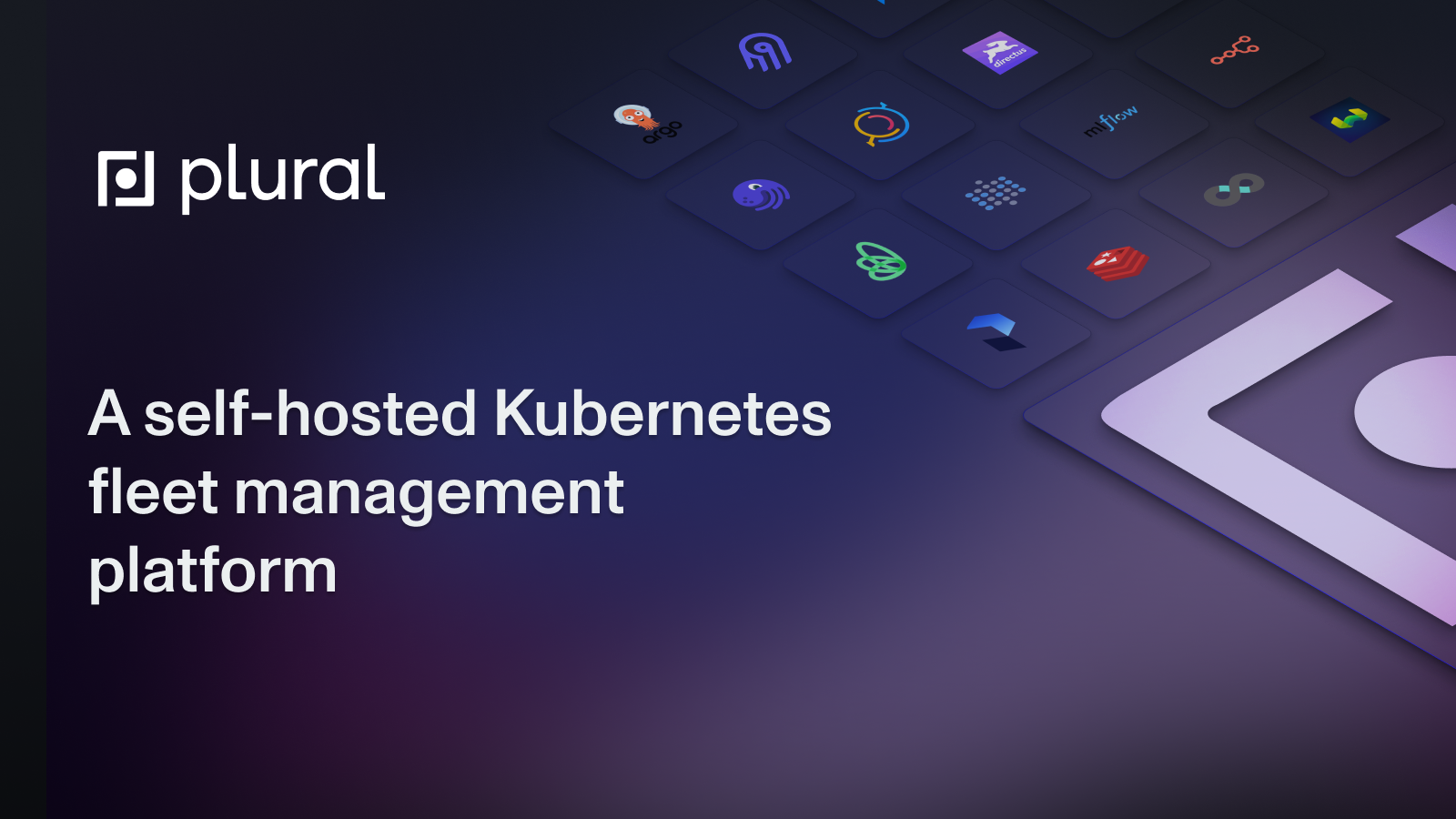
Horizontal Pod Autoscaling
Scaling your application to meet demand is key to managing Kubernetes workloads. The Horizontal Pod Autoscaler (HPA) automatically adjusts the number of Pods in a deployment, replica set, or replication controller based on metrics. The most common metric is CPU utilization, but you can also configure HPA to scale based on memory usage or custom metrics. When setting up HPA, carefully consider the appropriate scaling limits and thresholds to prevent runaway scaling and ensure your application remains responsive under load. For more advanced scaling scenarios, consider using the Vertical Pod Autoscaler (VPA), which automatically adjusts resource requests and limits for your Pods.
Troubleshooting Pods
Troubleshooting effectively requires a solid understanding of your application, Kubernetes primitives, and available tooling. This section covers common debugging techniques and solutions to frequently encountered issues.
Debugging and Health Checks
The first step in troubleshooting a pod is understanding its current state. kubectl describe pod <pod-name> provides detailed information, including the Pod's phase, events, and container statuses. Pay close attention to events, as they often pinpoint the root cause of problems, such as image pull failures or crash loops.
Kubernetes offers liveness and readiness probes to monitor container health. Liveness probes determine if a container is still running; if the probe fails, the kubelet restarts the container. Readiness probes signal whether a container is ready to accept traffic. A failing readiness probe removes the Pod from the associated service's endpoints, preventing traffic from reaching an unhealthy container. Use kubectl logs <pod-name> -c <container-name> to view application logs and gain further insight into the issue. For interactive debugging, use kubectl exec -it <pod-name> -c <container-name> – bash to run commands directly inside the container.
Common Issues and Solutions
Pod scheduling issues can arise from resource constraints, node affinity misconfigurations, or taints and tolerations. If a pod remains Pending, examine the scheduler events using kubectl describe pod <pod-name>. These events often indicate why the Pod cannot be scheduled, such as insufficient resources or unsatisfiable node selectors. Ensure that your nodes have enough resources to accommodate the Pod's requests and that your node affinity rules are correctly defined.
Explore platforms like Plural, which includes AI-driven Insights that uniquely combines real-time code and infrastructure telemetry, enabling Kubernetes users to quickly and automatically identify, diagnose, and resolve complex issues across clusters. Learn more at Plural.sh or schedule a demo.
Tools for Pod Management
Managing and troubleshooting Kubernetes pods effectively relies on having the right tools. This typically involves a combination of command-line interfaces (CLIs) for direct control and graphical dashboards for visualization and high-level insights.
Kubectl and Other CLI Tools
kubectl is the standard CLI for interacting with Kubernetes clusters. It offers various commands for managing every aspect of your Kubernetes deployments, including pods. For pod management, key commands include:
kubectl get- retrieve pod information.kubectl describe- detailed inspection of a pod's state.kubectl logs- access container logs.kubectl exec- execute commands within a running container.
These commands are fundamental for troubleshooting and understanding application behavior. Beyond kubectl, specialized CLIs like stern can streamline tasks like tailing logs from multiple pods, improving efficiency when debugging complex deployments.
Kubernetes Dashboards and UIs
While CLIs offer granular control, visual dashboards provide a valuable overview of your Kubernetes environment. The official Kubernetes Dashboard is a web-based UI that lets you visualize cluster resources, including pods, deployments, and services. Dashboards simplify monitoring key metrics like CPU and memory usage across nodes and offer insights into the health of your workloads. They are handy for identifying resource bottlenecks, tracking pod status, and understanding the overall performance of your applications. Alternative dashboard solutions exist, such as Plural's Operations Console which has varying features and integrations that allow you to select the tool that best fits your requirements.
Plural's Kubernetes Dashboard and its Benefits
While the open-source Kubernetes Dashboard and command-line tools like kubectl offer a baseline for managing and troubleshooting, they often lack the integrated experience and advanced features needed for managing Kubernetes at scale. Plural's Operations Console provides a secure, unified view of your entire Kubernetes landscape, simplifying key tasks and offering enhanced insights.
With Plural, you can monitor the health and status of your clusters, track resource usage, and quickly diagnose issues across your entire fleet. Plural simplifies upgrades, manages compliance, and streamlines troubleshooting. This consolidated view eliminates the need to jump between different tools and consoles, saving you time and reducing operational complexity. Instead of piecing together information from disparate sources, you have a single source of truth for all your Kubernetes operations.
Beyond basic monitoring, Plural offers AI-driven Insights, combining real-time code and infrastructure telemetry. This enables you to quickly identify, diagnose, and resolve complex issues across clusters. These insights provide a deeper understanding of your application behavior and infrastructure performance, allowing you to proactively address potential problems. Schedule a demo to see how Plural can transform your Kubernetes management experience.
Related Articles
- The Quick and Dirty Guide to Kubernetes Terminology
- The Essential Guide to Monitoring Kubernetes
- Why Is Kubernetes Adoption So Hard?
- How to manage Kubernetes Add-Ons with Plural
- Understanding Deprecated Kubernetes APIs and Their Significance
Unified Cloud Orchestration for Kubernetes
Manage Kubernetes at scale through a single, enterprise-ready platform.
Frequently Asked Questions
What's the difference between a Pod and a container?
A container is your application's actual running process, while a Pod acts as a wrapper around one or more containers, providing a shared environment, including network and storage. Think of a Pod as a small, isolated virtual machine where your containers reside. While a Pod can house multiple containers, the most common scenario is one container per Pod.
How do I create and manage Pods?
You generally don't create Pods directly. Instead, you use higher-level Kubernetes objects like Deployments, StatefulSets, and Jobs. These controllers manage the lifecycle of your Pods, handling scaling, updates, and restarts automatically. You define the desired state, and
How do Pods communicate with each other and the outside world?
Containers within the same Pod share a network namespace and can communicate using localhost. Communication between Pods uses standard IP networking. Kubernetes Services provides a stable IP address and DNS name for accessing a group of Pods, abstracting away the individual Pod IPs.
How can I persist data in a Pod?
Pods can use Volumes for persistent storage. Volumes are directories accessible to all containers within a Pod, and their data persists even if the containers restart or the Pod is rescheduled. Kubernetes supports various Volume types, including local disk storage and cloud-based solutions.
How do I troubleshoot problems with my Pods?
kubectl describe pod <pod-name> provides detailed information about a Pod's state, including events and container statuses. kubectl logs lets you view container logs and kubectl exec to run commands inside a container for interactive debugging. Kubernetes also offers liveness and readiness probes to monitor container health.
Newsletter
Join the newsletter to receive the latest updates in your inbox.




